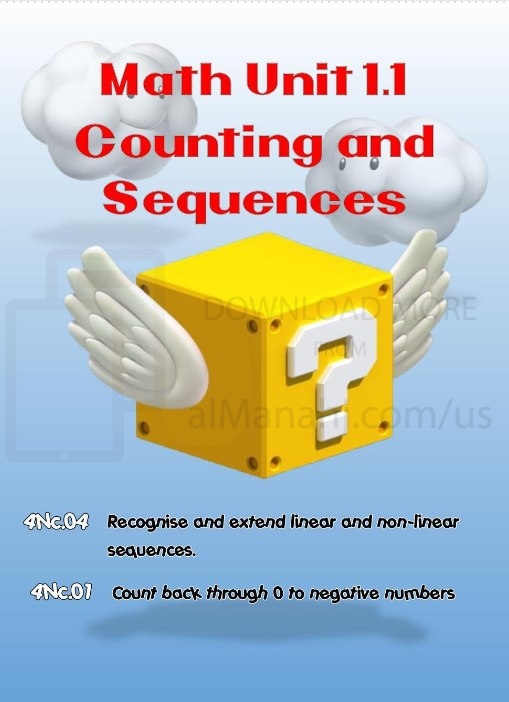File info: A Worksheet about Linear and Nonlinear Sequences for Grade 1 is an educational resource designed to introduce first-grade students to the concept of sequences and help them differentiate between linear and nonlinear patterns. The worksheet typically includes a series of exercises or problems that involve identifying, extending, and completing sequences. Here is a description of what you might find in a Worksheet about Linear and Nonlinear Sequences for Grade 1:
1. Identifying Linear and Nonlinear Sequences: This section focuses on tasks that require students to identify whether a given sequence is linear or nonlinear. Students will need to observe the pattern of numbers or objects and determine if there is a consistent increase or decrease. Linear sequences show a constant difference between numbers, while nonlinear sequences do not follow a consistent pattern.
2. Extending Linear Sequences: This section involves exercises where students need to extend a linear sequence by identifying the missing numbers. They will need to recognize the pattern and apply it to continue the sequence. For example, if the sequence is 2, 4, 6,
, students would need to identify that the pattern is increasing by 2 each time and write the next number as 8.
3. Completing Nonlinear Sequences: This section focuses on completing nonlinear sequences that do not follow a consistent pattern. Students will need to observe the given sequence and identify the relationship between the numbers or objects. They may need to think creatively and use their problem-solving skills to find the missing elements in the sequence.
4. Creating Linear and Nonlinear Sequences: This section involves tasks where students are asked to create their own linear and nonlinear sequences. They will need to apply their understanding of patterns and relationships between numbers to develop a sequence that follows a specific rule or exhibits a unique pattern.
The Worksheet about Linear and Nonlinear Sequences for Grade 1 aims to develop students' ability to recognize and analyze different types of sequences. By engaging in various exercises and problem-solving tasks, students can enhance their skills in identifying linear and nonlinear patterns, extending sequences, and thinking critically about numerical relationships. The worksheet promotes logical reasoning, pattern recognition, and the application of math concepts in a creative manner. |
